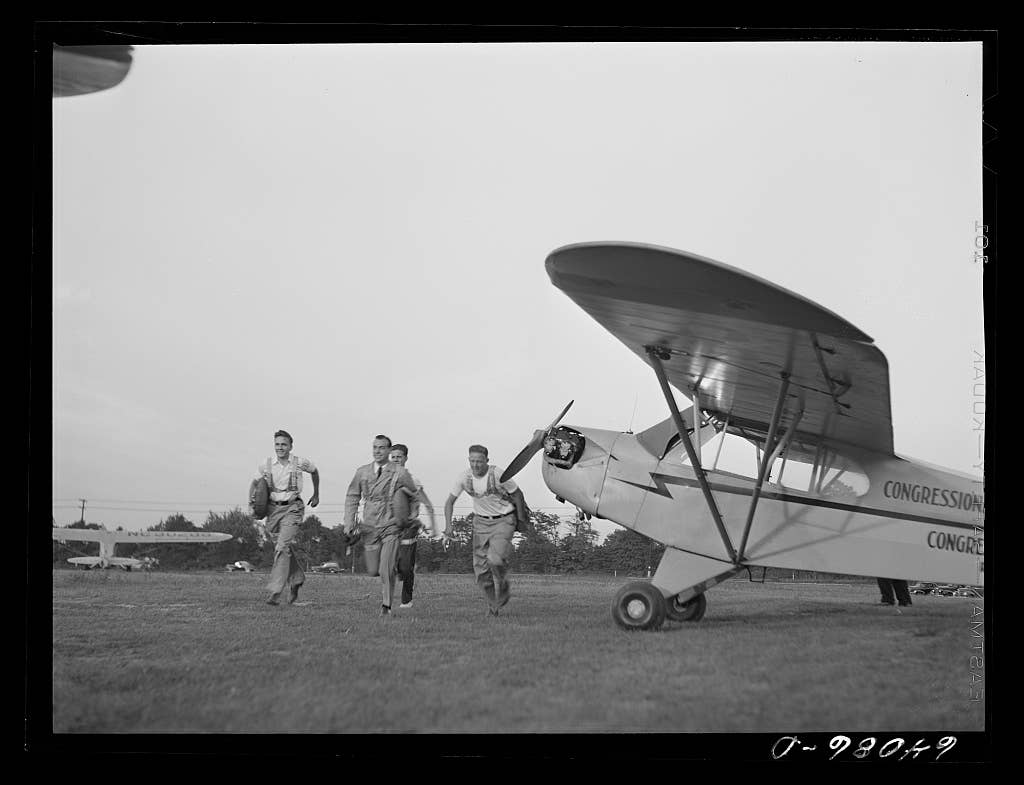The History Of The Civilian Pilot Training Program
Preparing future WW2 pilots on a massive scale.

Photo Courtesy of the Library of Congress. Public Domain
While most people have heard of the remarkable exploits and sacrifices of World War II pilots, including the legendary Tuskegee Airmen fighter escorts and the Women Airforce Service Pilots (WASP), many people are unaware of the program that prepared so many of these pilots to jump into their wartime roles. Operating from 1939 to 1946, the Civilian Pilot Training Program (CPTP) was conceived partly as a New Deal program to resuscitate the Depression-battered aviation industry and partly as a military program to prepare young men to become combat pilots.
In the late 1930s, despite growing conflict in Europe, the U.S. was still hoping to maintain neutrality. Even so, the awesome power and technology of the Luftwaffe combined with the skill and number of pilots made it clear that the British and U.S. air forces would be at a tremendous disadvantage if war should come.
The government increased its investment in new military aircraft, but the Army Air Corps alone would be unable to train pilots in sufficient numbers to meet its needs.
Enter the Civilian Pilot Training Program, which, just as the name says, used civilian resources, that is, instructors and planes, to train fledgling military aviators. It came at the perfect time.
On the homefront, the government sought to revitalize the aviation industry by creating a demand for aircraft as well as providing career opportunities for young people through vocational training and developing a sense of "airmindedness" in the broader population.
In the process, the CPTP not only shaped attitudes toward the future of air and space travel but also brought new opportunities for Black citizens and women to prove themselves and start to challenge society's attitudes about them.
While the innovative CPTP was the subject of debate throughout its short existence, its broader legacy cannot be denied: The pilots created by the CPTP changed history both in combat and on the homefront.
Modeled in part after programs in other countries: Germany, Italy, Britain and France
Initial appropriation approved by Congress: $4 million
Number of participating colleges and universities: 1,132
Number of flight schools: 1,460
Threefold mission: Revive the aviation industry, create a pool of pilots ready for military service, develop sense of airmindedness in the general population
Goal: Train 20,000 pilots per year
Total pilots trained, 1939-1944: 435,165
Total hours flown by pilots in CPTP, 1939-1944: Nearly 12 million
Pilot selection: The CPTP collected data on the types of pilots who succeeded and washed out. This data was used for later pilot selection criteria, enabling the Navy to develop a battery of tests, which could screen out 50% of candidates who would wash out of training.
Instructional techniques: The CPTP provided research on which instructional methods were effective and which were not, allowing for the development of standardized training programs for the military
Black pilots trained: Around 2,000 after a Congressional antidiscrimination mandate made flight and related vocational training available to Blacks for the first time
Number of Black colleges and universities originally in the program: 6 (more added later)
Black colleges originally in the CPTP: West Virginia State College for Negroes, Howard University, Tuskegee Institute, Hampton Institute, Delaware College for Colored Students and North Carolina Agricultural and Technical College
Black flight schools originally in the CPTP: The Coffey School of Aeronautics and North Suburban Flying School
Post-training path: Initially, military service as pilots not available to Blacks until the all-Black 99th Fighter Squadron was created on March 22, 1941
Number of all-women's colleges initially in the CPTP: 4; Lake Erie College, Adelphi College, Mills College and Florida State College
1:10: Ratio of women allowed in co-ed university programs
Women trained: Around 2,500 by 1942; the CPTP employed some female flight instructors
Post-training path: Still few options available to women; some joined the WASP
New name and mission in 1942: War Training Service
Military-only track: Civilians still trained to be pilots while attending college but signed contract to go into the military after their training was completed. Women were no longer permitted to participate in the program.
Teaching from a young age: Air Age Education Series, published by Macmillan Company, and other curriculum materials created to blend aeronautics into everyday lessons at the secondary and even elementary schools
Fees: Students required to pay a $35 to $50 fee to cover medical examination and life insurance
Ground school: 10 hours civil air regulations, 35 hours navigation, 35 hours meteorology
Flight instruction: 35 to 50 hours of flight training, including 8 hours of dual instruction, 9 hours of dual check time, 18 hours of solo flight
Required plane-to-student ratio: 1:10
Aircraft used: Over 50% Piper J-3 Cubs
Preferred configuration: Tandem
Other models used: Waco UPF-7, Luscombe Model 8, Taylorcraft Models B and D, Aeronca Defender (tandem version of the Chief, precursor to the 7AC Champ)
Notable CPTP pilots: World War II Ace Richard Bong and Astronaut and Senator John Glenn
August 1938: Robert H. Hinckley becomes chair of the new Civil Aeronautics Authority (CAA) and shortly thereafter proposes the idea of the CPTP
December 1938: President Franklin D. Roosevelt announces small-scale experimental program
February 1939: Demonstration phase of CPTP begins; of 330 pilots in training, 313 completed the program and received their pilot's license---a 95% completion rate, with only 1 fatality
August 1939: Congress approves funding for the program after much debate
October 1939: The full CPTP gets underway
1942: The CPTP mission changes to solely pre-military training under a new name, the War Training Service (WTS)
1944: Military ends ties with CPTP/WTS
1946: Program disbanded

Subscribe to Our Newsletter
Get the latest Plane & Pilot Magazine stories delivered directly to your inbox






